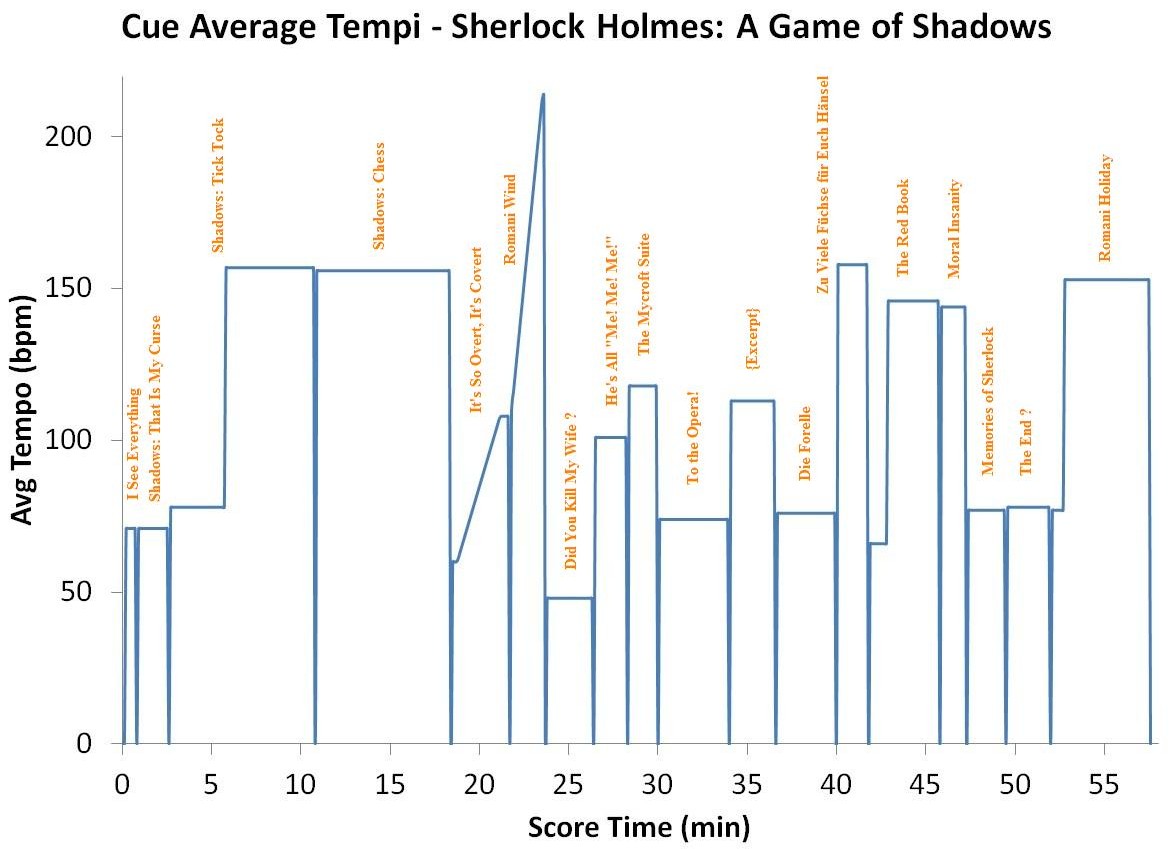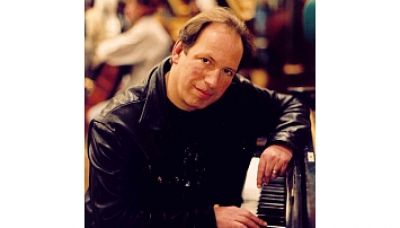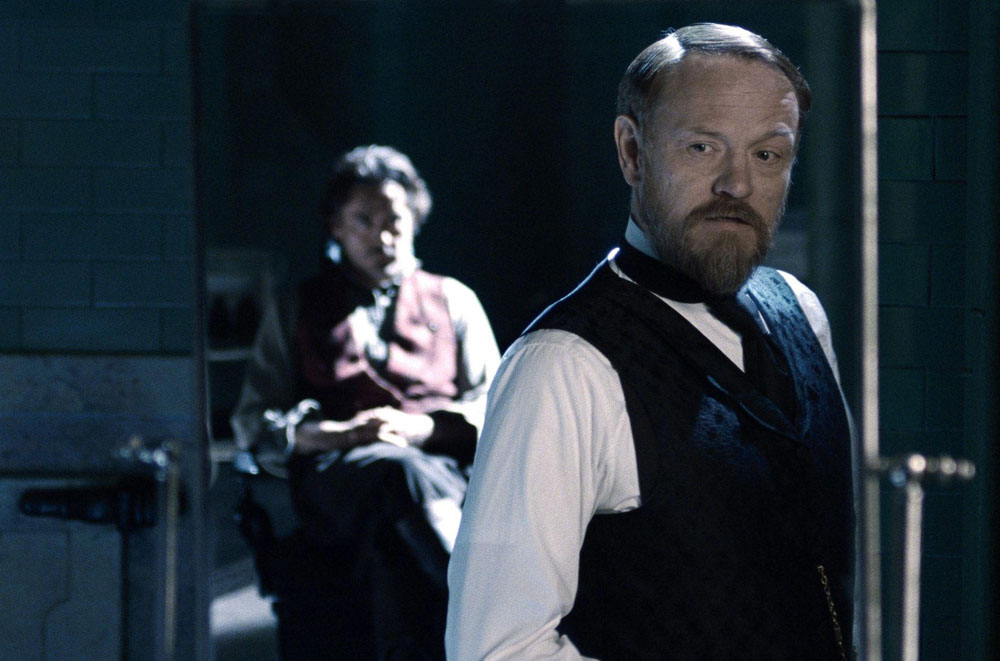
I t’s the furiously melodic likes of Gladiator, The Lion King, Inception, Batman Begins, Dark Knight Rises, Pirates of the Caribbean, Kung Fu Panda, and Sherlock Holmes that’s elevated film music to a thing of rocking beauty, as Zimmer and his team have employed every oddball instrument and influence from Gustav Holst, Lebo M. and the sound of bat wings into percussively thematic adrenalin.”
— Daniel Schweiger, 2011.
I f you ask me, Zimmer’s score rescues Sherlock Holmes (and Guy Ritchie et al.) in the new
‘A Game of Shadows’ film.
Z immer and his composer-orchestrator colleagues at
Remote Control Productions created a beautiful and varied score that augments the color and vista of the film, lending atmosphere, scope, and interest to what otherwise could seem predictable. Never gets in the way of what the script and imagery are doing, but never merely reinforces or sonically reiterates what’s been said or shown.
B ut more than this, I am really thrilled with the tempi and the rhythmic architecture of this score. I got the soundtrack and listened to it several times, measured the tempi bar-by-bar in each of the cues, and created a spreadsheet of the values (see jpeg above). I also put an EKG on myself and digitized my heartrate during each listening. Not only did my heartrate adapt to each of the tempo changes, but the
heart rate variability (HRV, using the simple RMSSD metric) also synced with Zimmer’s music. Empirically, I suspect that that “N-of-1” experiment is indicative of why this music “works”—physiologic response “pulls” cognition, rather than the other way around.
S ee the book by Bacci and Melcher (link below) for more on phase-locking and rhythmic ‘entrainment’ of breathing, heartbeat, and other physiologic rhythms, syncing with music.
S ince I’d captured the tempo timeseries, I decided to do some other calculations on it, too. I used the open-source R system’s package ‘entropy’ (link below) to calculate the Miller-Madow, James-Stein, Tsallis, Chao-Shen, and Shannon/Jeffreys entropy values. The entropy of the timeseries of tempi for these 18 cues is H = 2.72... pretty high... indicating a substantial amount of variability/unpredictability/interestingness. If you do entropy calcs for “bad” or ineffective film scores (as I happened to do several times last summer), you get much lower values, H between about 1.10 and 1.90.
M ost film schools don't even mention music, much less compare examples of good and bad scoring.”
— Richard Bellis, 2006, p. 8.
 T
T he cues’ titles (track-names) collect words and phrases from the screenplay that are cadential—perfect rhythmic-harmonic demarcations of the narrative arc and plotting. It’s clear that Zimmer applied an admirable amount of objectivity in the spotting session, to inject material that adds considerable depth to the character or the story without the material asserting itself as a vehicle for his own ego.
 T
T he score (Die Forelle; The Red Book; Moral Insanity) makes Robert Downey Jr’s Holmes more alert and angry when he is facing Jared Harris’ Moriarty. The score (He’s All ‘Me! Me! Me!’) makes Jude Law’s Dr. Watson all the more hapless as he gets unwillingly caught up in the plot.
T he producers and Guy [Ritchie, the director] and Jude [Law, co-star] and I got together and tried to have it feel like an extension of what we think brotherhood is—the bickering and miscommunications are part of something that aspires to something higher.”
— Robert Downey Jr., Scotland BigIssues Magazine 05-DEC-2011.
A Game of Shadows’ stands as a valentine to the public-school buccaneer. It provides Ritchie with a licence to run wild with Gypsies, trade punches with cossacks, or just generally arse about in expensive hotels. It gives us anarchy as panto and global espionage in the guise of a homoerotic stag weekend.”
— Xan Brooks, The Guardian.
I n other words, Zimmer’s score truly ‘services’ the film’s narrative, neither over-writing nor under-writing. Naturally, given the big-action subject matter in this film, there are lots of huge orchestral cues. But there are more than half of the cues that are intimate, chamber-like pieces.
M any think that what we do is ‘Art’. I disagree. Music is an art form. Film music is a craft with its roots in art. Art is a form of self-expression, and the last thing a director wants is some composer coming in and expressing him/herself all over the director’s film.”
— Richard Bellis, 2006, p. 69.
F olk idioms in the Romani melodies (
doina repeated-note gesture of lament), pentatonicism, Phrygian scale with the second and third scale degrees raised when ascending, and fraigish harmonic minor, flying-staccato,
alla zingarese poco a poco accelerandos “hallgató/lassú-közép gyors-friss" (e.g., Kesergö or or verbunkos or csárdás style in ‘It’s So Overt, It’s Covert’; ‘Romanian Wind’) to breakneck speeds, acrobatic violin with pitches bending and glissing, and the tone growling and crying ... great
colla parte tempo-leading.
T he Hungarian
hallgató of the ‘Did You Kill My Wife?’ brass band is superb.
G ee, this soundtrack is an admirable thing! The tremolos begin slowly, and the accelerandi melt into the flourishes so that they sound like one gesture—far bigger ones than you imagined when they began. The playing and conducting are excellent throughout. Precisely nailing the tempo variations, yet sounding totally organic while remaining faithful to meter. Very, very nice!
- Hans Zimmer website #1 (Remote Control Productions)
- Hans Zimmer website #2 ?
- Zimmer H, et al. Sherlock Holmes: A Game Of Shadows Soundtrack. (WaterTower Music, 2011.)

- Sherlock Holmes: A Game of Shadows page at IMDB.com
- Bacci F, Melcher D. Art and the Senses. Oxford Univ, 2011.

- Bartók B. Hungarian Folk Music, tr. M. Calvocoressi. Oxford Univ, 1931.

- Harbar M. Eastern European Music for Violin Duet. Mel Bay, 2002.

- Hausser J, Strimmer K. R system, package ‘entropy’, cran.r-project.org, 20-MAR-2011.
- Kodály Z. Folk Music of Hungary, tr. & rev. R. Tempest, C. Jolly. Macmillan, 1960.

- Sárosi B. Folk Music: Hungarian Musical Idiom. Franklin, 1986.

- Sárosi B. Gypsy Music. Franklin, 1978.

- Schweiger D. On the Score: Interview with Hans Zimmer. Film Music Magazine, 16-MAY-2011.
- Schneider D. Bartók, Hungary, and the Renewal of Tradition. Univ California, 2006.

- Schager N. Review: Sherlock Holmes: A Game of Shadows. Slant, 14-DEC-2011.
- Szabolcsi B. A Concise History of Hungarian Music, tr. S Karig. Barrie & Rockliff, 1974.

- Thomson J. The Gypsy in Violin Music. DMA Dissertation, Univ North Texas, 1990.
- Viski K. Hungarian Dances, tr. S. Sweetland. Simpkin Marshall, 2011.






































